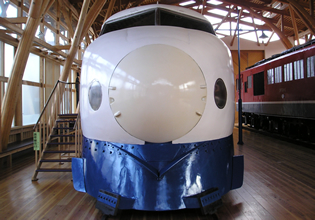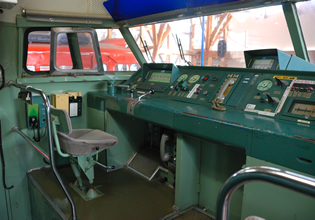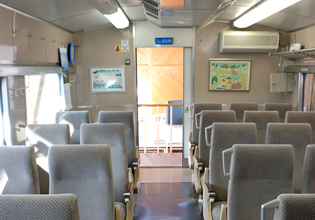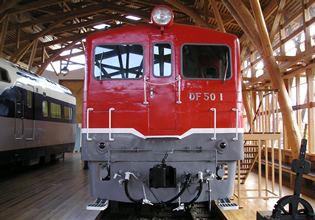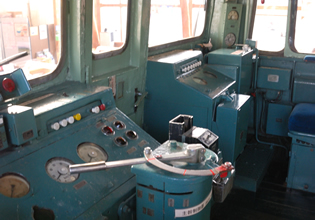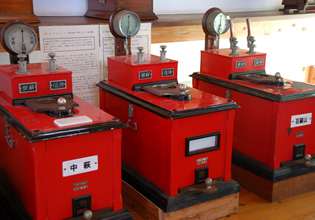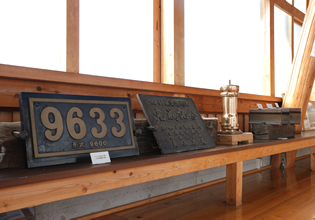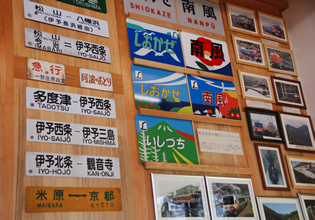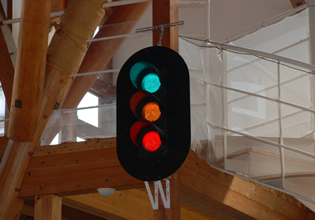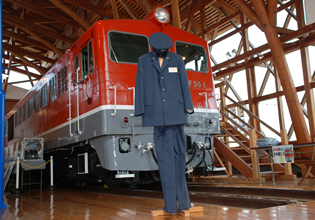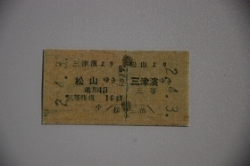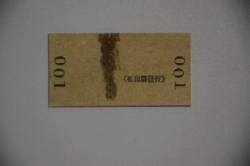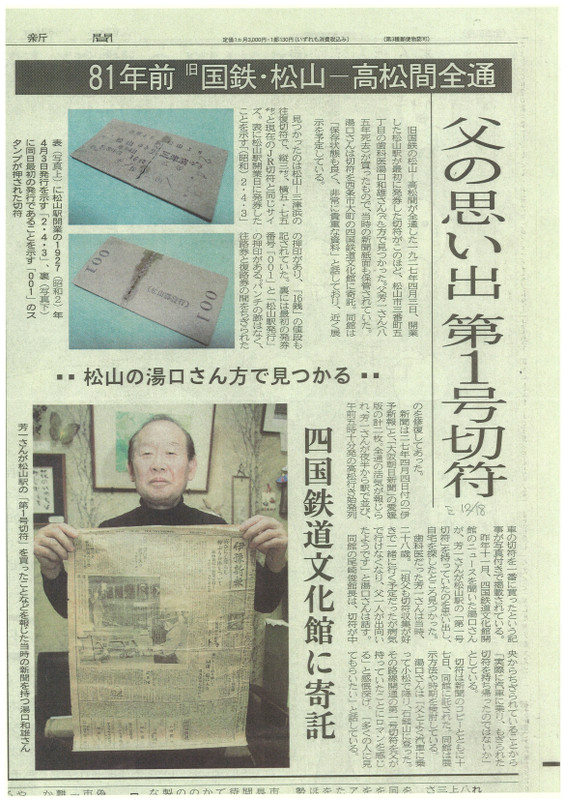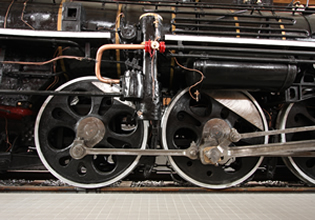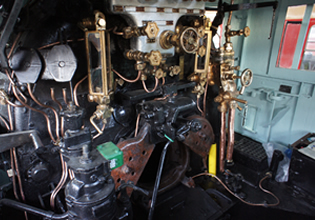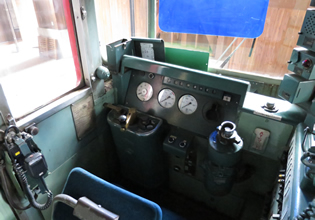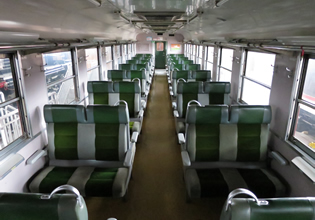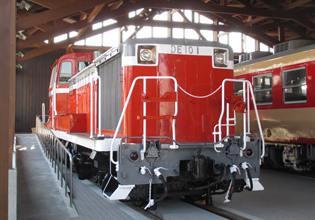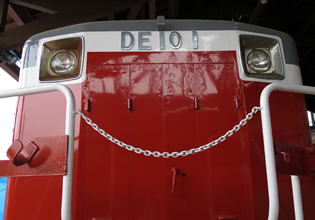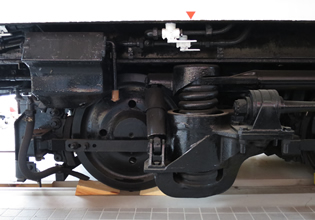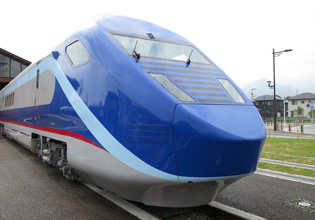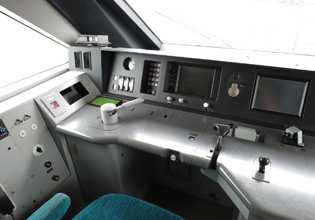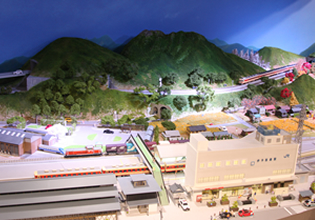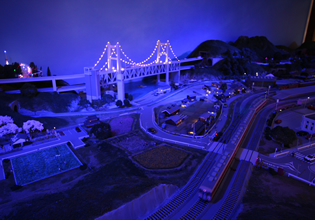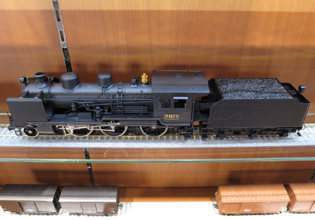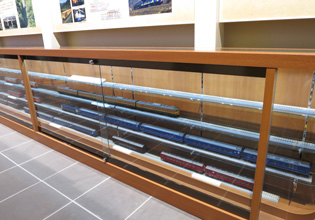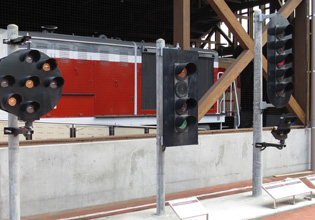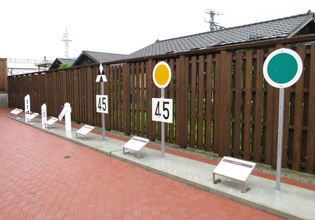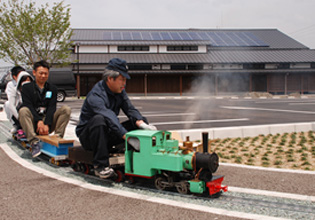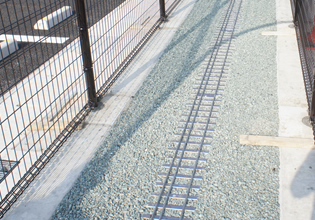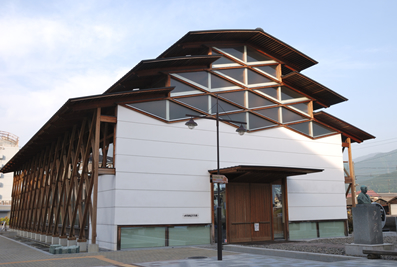
Inside this bold wooden structure lies the first generation Type-Zero Shinkansen “bullet train” car, which debuted in 1964, as well as the DF50 diesel engine #1 car, which was used mostly in Shikoku and is an official railway memorial piece. The DF50 car is the only car preserved in Japan in running condition, and the Yosan Line track from the neighboring Iyo Saijo station has actually been split to run into the museum to demonstrate its running capability.
| Open Hours | 9am – 5pm (Last entry : 4:30pm) |
|---|---|
| Regular Holiday | Closed Wednesdays (If Wednesday is a holiday, closed the following day) |
| Admission (incl. South Wing) | High school and above : 300 yen Elementary and middle school : 100 yen Pre-school or lower : free |
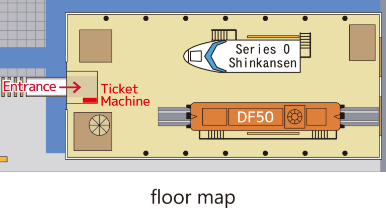
Type Zero Bullet Train
Type Zero Bullet Train "21-141"
This is the Bullet Train car which traveled from Tokyo - Shin Osaka on
October 1st, 1964 for the first ever debut journey of the Bullet Train.
This "21-141" car was made in 1976, and its large windows are a characteristic.
At the time of it's retirement in October 2000,
it was affiliated with JR Hakata Railways,
functioning on the Sanyo Shinkansen line as a "Kodama" car. The distance
traveled by this car is 10.2 million km, equivalent to 255 trips around the earth.
In December of 2000, JR Shikoku proudly accepted it from JR West, and it was preserved at the Tadotsu Factory. Afterwards, the city of Saijo proudly accepted it from JR Shikoku, and it was then exhibited at the Shikoku Railway Cultural Center.
DF501
The DF50 No. 1 car was manufactured at the Mihara Factory of the New
Mitsubishi Heavy Industries Co. It was first assigned to the Takamatsu railway
sector, later being assigned to Tsuruga, Nagano, and Yonago as well, before
being re-assigned to Takamatsu in 1967.
On September 25th, 1983 its final trip was made on the "Sayonara DF50
Tosa Road," much to the regret of its many fans. In the end, the DF50
ran 2.6 million km, equivalent to 67 trips around the earth.
The No. 1 car on display here is the only functioning DF50 car remaining in
Japan. Deemed a railway heritage selection, it is a remarkable and valuable car.
*You can sit in the driver’s seat of both cars, move the levers, push the switches, and feel what it’s like to be in the real driver’s seat!
Rail Gauge Bicycle (JR Railways nickname “Rail Star”)
The rail gauge bicycle is used to patrol and connect the railways between stations. It is a 2-seater and includes space for maintenance equipment as well. There are foot-pedal as well as gasoline engine types, and due to their light weight and ease of use, they are used commonly on the railways here.
At the Shikoku Railway Cultural Center, you can ride the rail gauge bicycle which has been donated to us from JR Shikoku on real train tracks laid in the parking lot.
(Available to ride on holidays and Sundays only. However, it may not be used on event days or in case of bad weather)
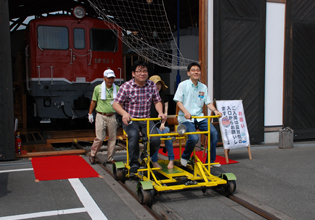
C58 Steam Engine Automatic Drive Wheel
The diameter of this wheel is 1520mm, and it weighs approximately 1.5 tons. On top of the stone pedestal (2m wide, 1.3m deep, and 20cm tall) the shaft is suspended vertically and the drive wheel is put in place. The drive wheel exhibited here was made in 1942, and after being affiliated with the Tadotsu and Tsuyama regions (in Kagawa and Okayama respectively) it was retired in 1971 from the #321 train.
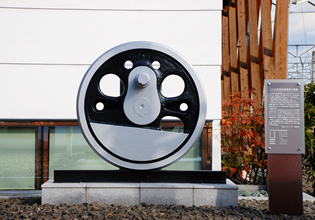
Pantograph
Pantographs from the type-8000 special express trains (“Shiokaze” & “Ishizuchi”)
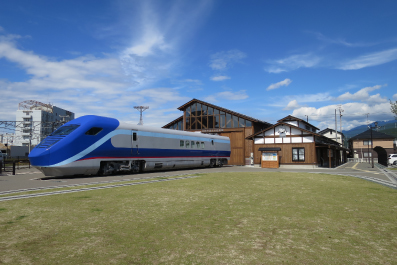
The South Wing features fun and informative exhibits and activities for all ages, catering to families and railway enthusiasts alike. Displays include a large-scale train diorama depicting famous sights along Shikoku's railways, explorable train cars, and real railway signals, signs and driving wheels.
The indoor exhibition hall features a Class C57 Steam Engine, known affectionately by fans as "The Lady"; a KiHA 65 Express Train once used by Japan National Railways; and a Class DE10 Diesel Engine No. 1 used exclusively on Shikoku. Outside the South Wing is a second generation "Free Gauge" test car designed to run on both standard shinkansen and narrow regional rails.
| Open Hours | 9am – 5pm (Last entry : 4:30pm) |
|---|---|
| Regular Holiday | Closed Wednesdays (If Wednesday is a holiday, closed the following day) |
| Admission (incl. North Wing) | High school and above : 300 yen Elementary and middle school : 100 yen Pre-school or lower : free |

Class C57 Steam Engine First Series (No. 44)
201 of these high-performance passenger steam locomotives were produced from 1937-47. With its sharp, beautiful exterior, this train earned the nickname "The Lady" from fans. The C57 (No. 135) is also known for being the last steam engine to pull a Japan National Railways passenger car on December 14, 1975.
The engine on display (No. 44) is a first generation locomotive completed on March 30, 1938 at the Mitsubishi Heavy Industries Shipyard in Kobe. It is one of five C57 trains (with Nos. 38, 57, 135, 144) that operated from Hokkaido's Iwamizawa No. 1 Engine Depot.
This locomotive, called "Spring Thunder" after the nickname of former Saijo mayor and director of JNR Shinji Sogo, was located in the Saijo City Citizens' Park for many years before being moved to the Shikoku Railway Cultural Center for permanent exhibition.
KiHA 65 No.34 KiHA 65 Express Train
With 104 trains produced from 1969-72, the KiHA 65 Express Train is equipped with both a powerful drive engine and an air-conditioning motor.
On Shikoku, this locomotive was used as an express train based out of the Takamatsu Operations Office until increased use of limited express trains relegated it to local service. As newer local service cars were introduced, the number of these trains decreased, and service stopped entirely in October 2008.
The No.34 train on display was in service until the very end. In 2005 it was repainted in its original colors as a JNR express train, and after its decommission was stored in the JR Tadotsu Factory. It is currently on loan to the Shikoku Railway Cultural Center by JR Shikoku.
DE101 Class DE10 Diesel Engine
The Class DE10 Diesel Engine was designed for shunting and local service, and 708 cars were produced between 1966 and 1978.
This train is equipped with a V12 cylinder DML61ZA engine capable of 1250 hp (the DE10-1000 subclass was upgraded to a DML61ZB engine offering 1350 hp), and a torque converter that makes it possible to switch between high and low speed modes depending on the task. The car is a semi-center cab type with excellent forward visibility, and control platforms are installed on both the left and right sides of the cab that can be used depending on the direction of movement.
In 1966, two prototype cars were stationed in the Matsuyama Engine Depot for operational testing. After that, the mass-produced Class DE10 engines were used mostly for local passenger service and towing cargo cars, as well as for shunting at stations and rail yards. However, with the shift to diesel multiple unit trains and electric railcars use of these engines declined. Now they are used as extra trains or to tow construction cars, with only two remaining at the Takamatsu Operations Office.
The car on display is one of the two test engines (No.1) from 1966, used in Shikoku until its retirement in February 1987.
The Gauge-Change Train "Free Gauge Train" 2nd Test Car GCT01-201
The Free Gauge Train is capable of using different gauges to alter wheel width while in motion to run on both standard Shinkansen rails (width: 1435mm) and older tracks (1067mm), making direct operations through different lines possible. This feature removes the need for passenger transfers and reduces travel time.
The 2nd Test Car on display was completed in March 2007 at the JR Kyushu Kokura Factory. Until 2009, it was engaged in test operations on Kyushu's shinkansen and regular train lines.
In June 2011, the train was refitted and moved to the Yosan Line in Shikoku for test operations between Tadotsu and Sakaide Stations, and in August of that year it began high-speed curb testing between Tadotsu and Takihama Stations.
Test operations were completed in September 2013 and the train was stored in the JR Tadotsu Factory until it was graciously donated to this facility by the Japan Railway Construction, Transport and Technology Agency (JRTT).
Large-scale Train Diorama
This working miniature railroad recreates Iyo-Saijo Station, the Railway History Park, and famous sights along rail lines across Shikoku's four prefectures. Ten-minute shows are held several times a day. Guests can enjoy the beauty of Shikoku's railways from morning to night as model trains depart from and return to Iyo-Saijo Station.
JR Shikoku Display Corner
Panels depict the history of the railways on Shikoku, including information on unusual station names and other interesting (and little-known) facts.
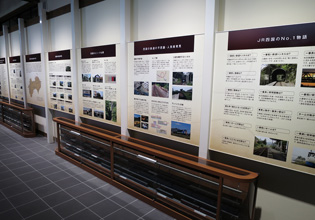
Masuda Collection
While Managing Director of the Japan National Trust, Kozo Masuda (1934-2012) played an instrumental role in the construction of the Shikoku Railway Cultural Center. As an honored adviser to the museum, he was an invaluable resource in its day-to-day operations.
The South Wing contains a large number of valuable model trains donated by Mr. Masuda's family.
Kids Corner
Children can learn about the railroad while playing with building blocks and other wooden toys. They can also interact with real display items such as rail ties and a driver's wheel.
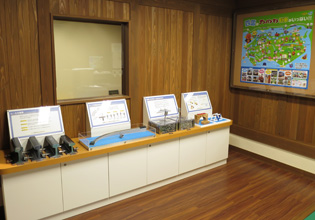
Exhibition Hall: A Taisho-Showa Era Station Platform Replica
The indoor exhibition hall contains information and materials about the three cars on display. Replica timetables and other items recreate a station platform from the era when the cars were in use.
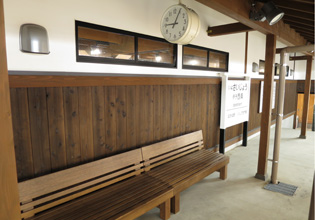
Outdoor Exhibit Area
Get a closer look at objects such as railway signs and signals that can normally be viewed only from a distance. Several wheels on loan from JR Shikoku are also on display.
Mini SL Train Course
The South Wing features a 235 meter-long Mini SL (Steam Locomotive) course. This fun attraction can be enjoyed during special Shikoku Railway Cultural Center events.


